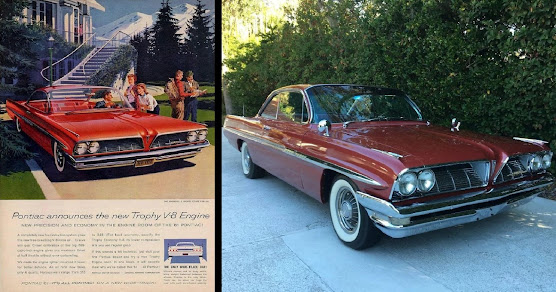Malevolent (pronounced muh-lev-uh-luhnt)
(1) Wishing
evil or harm to another or others; showing ill will; ill-disposed; malicious.
(2) Evil;
harmful; injurious.
(3) In
astrology, a force evil or malign in influence.
1500–1510:
From the Middle English malevolent (suggested by Middle English malevolence (analyzed of late as “male
violence”)), from the Old French malivolent
and the Latin malevolentem, the
construct being male (badly, ill, wrongly)
+ volens (wanting, willing,
wishing”), the present participle of velle
(to want, wish for, desire). The most
commonly used form in Latin appears to have been malevolēns (ill-disposed, spiteful). Upon entering English in the sixteenth
century, the word retained this sense of ill will or harmful intent. The adjective malevolent (having an evil
disposition toward another or others, wishing evil to others) dates from the
early sixteenth century while the noun malevolence (the character of being
ill-disposed toward another or others; ill-will, malice, personal hatred) was
in use by the mid-fifteenth, from the Old French malevolence and directly from Latin malevolentia (ill-will, dislike, hatred), from malevolentem (nominative malevolens)
(ill-disposed, wishing ill, spiteful, envious).
The antonym is benevolent and the usual negative forms are unmalevolent
& non-malevolent. Malevolent is an
adjective, malevolence is a noun and malevolently is an adverb; the noun plural
malevolences.
Malicious (pronounced muh-lish-uhs)
(1)
Full of, characterized by, or showing malice; intentionally harmful; spiteful.
(2) In
common law jurisdictions, vicious, wanton, or mischievous in motivation or
purpose (often in statute as an “aggravating circumstance”).
(3) In
common law jurisdictions as malicious prosecution, an intentional tort which
arises from a party (1) intentionally and maliciously instituting or pursuing
(or causing to be instituted or pursued) a legal action (civil or criminal)
that is (2) brought without probable cause and (3) dismissed in favor of the other
party. It belongs sometimes to the class
of actions called “abuse of process”.
(4) In
common law jurisdictions as “malicious prosecution”, a common law intentional
tort which arises from a party (1) intentionally and maliciously instituting or
pursuing (or causing to be instituted or pursued) a legal action (civil or
criminal) that is (2) brought without probable cause and (3) dismissed in favor
of the other party.
(5) In
common law jurisdictions as “malicious mischief”, the willful, wanton, or
reckless destruction of the personal property of another occasioned by actual
ill will or resentment toward the owner or possessor of such property.
1175–1225:
From the Middle English malicious (which
may have existed in the Old English as malicius
but this is contested), from the Old French malicios
(showing ill will, spiteful, wicked (which persists in Modern French as malicieux)) from the Latin malitiōsus (wicked, malicious), the
construct being maliti(a) (badness; ill will; spite), from malus (bad; evil) + -osus. In Latin, the -ōsus suffix was added
to a noun to form an adjective indicating an abundance of that noun. The Middle English form displaced the earlier native
Middle English ivelwilled & ivelwilly (malicious), both related to the
Old English yfelwillende (literally
“evil-willing”). In early fourteenth
century Anglo-French legal language, it meant “characterized by malice prepense”, essentially little
different from the sense “malicious” today enjoys in statute in common law
jurisdictions. The adverb maliciously
(in a spiteful manner, with enmity or ill-will) emerged in the late fourteenth
century while the noun maliciousness (extreme enmity or disposition to injure;
actions prompted by hatred) was in use a few decades later. The spelling malitious is obsolete. The
usual negative forms are non-malicious & unmalicious but lexicographers
note also the use of semi-malicious & quasi-malicious, forms adopted
presumably when some nuance of the evil done seems helpful. At the other end of the scale of maliciousness,
the comparative is more malicious and the superlative most malicious. Malicious is an adjective, maliciousness is a
noun and maliciously is an adverb.
Malignant (pronounced muh-lig-nuhnt)
(1)
Disposed to cause harm, suffering, or distress deliberately; feeling or showing
ill will or hatred.
(2) Very
dangerous or harmful in influence or effect.
(3) In
pathology, tending to produce death.
(4) In
medicine (usually of cells or a tumor), characterized by uncontrolled growth;
cancerous, invasive, or metastatic.
1540s: From
the Middle French malignant, from the
Late Latin malignantem (nominative malignans) (acting from malice), stem of
malignāns, present participle of malignāre (to act maliciously; to behave
with malign intent) and malignō (to
malign, viciously to act). The English
malign (evil or malignant in disposition, nature, intent or influence) was from
the Middle English maligne, from the
Old French maligne, from the Latin malignus, the construct being malus (bad) + -gnus (born), from gignere
(to bear, beget) from the primitive Indo-European root gene- (give birth, beget).
In medicine (of tumors and such), the antonym is “benign” but non-malignant
& unmalignant both exist as does semi-malignant which sounds strange to
non-clinical ears but which is used apparently with the sense of “not very
malignant”, presumably something of a comfort to a patient. The most commonly distinction in medicine
seems to be between “malignant” and “benign” and this provide the author Evelyn
Waugh (1903-1966) with one of his better jabs.
Learning that the notoriously obnoxious Randolph Churchill (1911-1968) had
been operated on after a tumor was found, when told it had been removed and
sent for an analysis which proved it “benign”, he observed: “What a miracle
that modern medicine could find the only part of Randolph that is not malignant
and then remove it.” Malignant
is an adjective, malignancy & malignance are nouns, malignantly is an
adverb; the noun plural is malignancies.
Lindsay Lohan and her lawyer in court, Los Angeles, December, 2011.
The
word entered the medical jargon in the 1560s but the earlier use was as a
theological slur, the Church describing as malignant “those damnable followers of the antichrist”
in the ecclesiam malignantum (best
translated as “Church of the Wicked”), a concept found in many writings in early
Christian thought, particularly among certain groups that emphasized the
contrast between the true, faithful Church and those who they believed were
corrupt or evil within the broader Christian community. The theme continues to this day and can be
identified as the source of many schisms and internecine conflicts within and
between many religions. The term existed
in a number of Latin Christian writings, often linked to Augustinian theology. Saint Augustine of Hippo (354–430), in his
work attacking the Donatists (a Christian sect which in the fourth century
forced a schism in the Church of Carthage) referenced the ecclesia malignantium to describe those within the Church who were
corrupt or sinful, in contrast to the ecclesia sancta (the holy Church). It was Augustine who constructed the
influential doctrine that while within the Church, there could be both saints
and sinners, ultimately the Church itself remained holy, an interesting
proto-structralism upon which churches of many denominations to this day fall
back upon in their handling of clerical scandals.
The ecclesia malignantium were used metaphorically
to contrast the “true” Church (those who genuinely
followed Christ) with those who may have been Christian in name but acted in
ways that were contrary to Christian teachings, thus aligning themselves with
evil or wickedness. In the secular
world, the model is not unfamiliar, a modern example being those in the US
Republican Party not judged sufficiently “pure”
by the right-wing fanatics being labeled “RINOs” (Republicans in Name Only), an
idea Saint Augustine would have recognized.
So, faith and politics can both be binary exercises, those judged heretical,
schismatic, or in some way morally corrupt being a malignant presence in the
community and needing to be excised as swiftly as the surgeon’s scalpel slices
out a malignant tumor. During the
sixteenth century Protestant Reformation in Europe, the language was
re-purposed, by the 1540s used by protestant theologians and activists to
condemn as heretics the pope and the Church in Rome. By the 1590s, malignant was in use to mean
(of persons) “disposed to inflict suffering or cause distress” whereas in the
early fourteenth century “malign” was used as an adjective and the now extinct malignous meant “poisonous, noxious”. The noun malignancy dates from circa 1600 and
by mid century had come to mean “state of extreme malevolence, bitter enmity”,
the particular use in medicine (of diseases, growths, tumors etc with a virulence
and tendency to get worse) appears in the medical literature from the 1680s. In English history, borrowing from the
turbulent priests, both the followers of Oliver Cromwell (1599–1658; Lord
Protector of the Commonwealth 1653-1658) and the royalist forces would label
each other “malignants”.
In English, “mal-” words are
familiar. The mal- prefix was from the
Old French mal- (bad; badly) from the
Latin adverb male, from malus (bad, wicked). In English the prefix was applied to create
words variously with some denotation of the negative including (1) bad, badly
(malinfluence), (1) unhealthy; harmful (malware), (3) unpleasant (malodorous)
(4) incorrect (malformed), (5) incomplete (maldescent) & (6) deficiently
(malnourished). Malevolent, malicious
& malignant are from a different linage but all are in some way negative on
nature but there are differences between them:
Malevolent means “having or showing a desire to cause harm to others
and carries the connotation of “a deep-rooted ill will or hatred”. Malicious means “intending to do harm,
typically without justification” and connotes something of an emphasis on a “spiteful
or cruel intent”. Malignant means “harmful,
dangerous, or likely to cause death and while historically it was used to refer
to “extreme malevolence”, the use in medicine has in the modern age tended to
make that use almost exclusive although it can still be used of anything (or
anyone) actively harmful or evil. So in use,
the modern tendency is for malevolent to be used of “ill will or hatred”, malicious
“an intent to cause harm” and malignant “something that is dangerously harmful,
often in a physical or medical context”.
The related "malign" seems most be used of intent and harmful speech. Which to use hangs also on intent; if someone
is murdered by the Freemasons, it’s not unreasonable to suppose the intent was
malicious and the act malevolent but had they been eaten by a shark while swimming,
neither word should be invoked because that’s just a thing sharks do.


.jpg)














